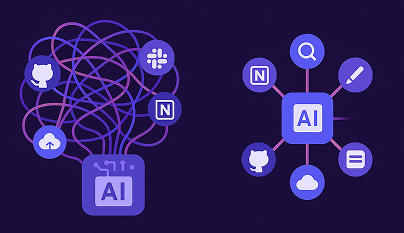
Advanced Strategies for Maintaining API Integrations
In this blog post, we'll discuss the striking similarity between 3rd-party APIs and databases in terms of maintenance. Some other key tips include infusion of SRE practices and diligent preparation of integrations for handoff that ensures a stable trajectory for your mission.
There’s a good way to streamline that bumpy road to your next 3rd party API integration...
It starts with planning ahead and goes all the way to the performance of the external service you’ll consume post-integration. While existing tools may offer some assistance, their thrust may fall short when confronting the complexities of API integrations.
In this blog post, we'll discuss the striking similarity between 3rd-party APIs and databases in terms of maintenance. Some other key tips include infusion of Site Reliability Engineering (SRE) practices and diligent preparation of integrations for handoff that ensures a stable trajectory for your mission.
Here’s what you should consider before you integrate another 3rd partyAPI .
Start Treating 3rd Party API Integrations Like Databases
One fundamental principle for successfully integrating with external services is to treat them with the same care and attention you would give to databases.
Just as you design your database schema and queries for efficiency and maintainability, your approach to API integrations should be similarly thoughtful.
- Data Modeling: Start by understanding the data model of the external service and how it aligns with your application's data needs. Design your code to handle data transformations, conversions, and validation effectively.
- Error Handling: Just as you implement error handling for database queries, do the same for API requests. Consider scenarios like network failures, rate limits, and unexpected responses. Robust error handling can prevent your application from crashing or behaving unpredictably.
- Caching: Implement caching strategies to reduce the load on external services and improve response times. Caching can be especially valuable when dealing with repeated identical queries.
Build a Single Point of Monitoring
To effectively manage the performance and reliability of your external service integrations, consider building a centralized monitoring system. This single point of monitoring that collects and analyzes metrics and logs from all systems integrating with external services.
- Comprehensive Visibility: A centralized monitoring system provides comprehensive visibility into the health and performance of your integrations. It allows you to detect anomalies, troubleshoot issues, and proactively address potential bottlenecks.
- Scalability: As your application scales and incorporates more external services, having a single point of monitoring becomes essential. It ensures that you can keep track of all integrations without overwhelming your monitoring infrastructure. It can also be useful to cross-query data from different sources
Apply Consistent Logic and SRE Practices
Consistency is key when managing third-party API integrations. By applying logic consistently across all API calls, you create a foundation that Site Reliability Engineers (SREs) can later manage effectively. Incorporating such practices into your integration process can significantly enhance the reliability and performance of your 3rd party integrations.
- Middleware: Consider implementing middleware components that located between your application and external services. These middleware components can apply common logic, such as authentication, logging, and rate limiting, to all API calls.
- Standardized Interfaces: Define standardized interfaces for interacting with external services. This simplifies the integration process and ensures that SREs can easily understand and maintain the codebase.
- Failure Analysis: Implement practices for post-incident analysis and root cause analysis. This helps identify recurring issues, leading to proactive improvements in integration code and configuration.
- Configuration Management: Store configuration settings separately from your codebase. This allows you to adjust settings without modifying code.
Takeaways for your next Integration
- Integrating with external services is a crucial aspect of modern software development.
- To ensure the success of these integrations, it's essential to treat them in a similar manner to databases, minimize redundancy, build a single point of monitoring, and apply logic consistently.
- While existing tools can help with some aspects of integration management, they often fall short in providing a comprehensive solution that addresses all these considerations at once.
By following these tips and best practices, you can navigate the challenges of third-party API integrations more effectively and deliver reliable, high-performing software solutions to your users.
Ready to Start your journey?
Manage a single service and unlock API management at scale


.png)



